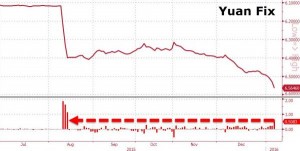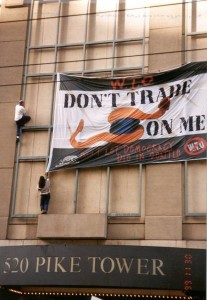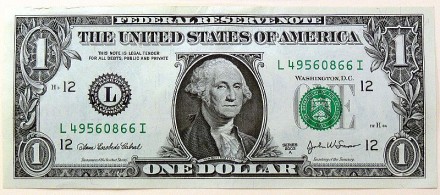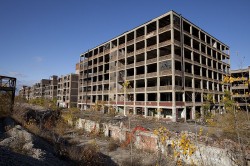 Did you know that an average of 23 manufacturing facilities were shut down every single day in the United States last year? As World War II ended, the United States emerged as the greatest industrial power that the world has ever seen. But now America’s industrial might is being gutted like a fish and both political parties seem totally unconcerned. Yes, we will always need trading relationships that are fair and balanced with other countries that have economic systems that are similar to our own. However, the truth is that most of our trading relationships are neither “fair” nor balanced. For example, China manipulates currency rates so that Chinese products are much cheaper than they should be, they brazenly steal our technology and we let them get away with it, they deeply subsidize their most important industries and they exploit their citizens by allowing them to be paid slave labor wages. How in the world does that resemble the “free market” at work? Predatory nations such as China do everything that they can to distort the free market. So why in the world would any rational economist ever recommend that we should keep trading with other countries that are cheating us blind? After you read the facts in this article about the gutting of America’s industrial might, hopefully you will get very angry. We need the American people to start getting very upset about these very important issues.
Did you know that an average of 23 manufacturing facilities were shut down every single day in the United States last year? As World War II ended, the United States emerged as the greatest industrial power that the world has ever seen. But now America’s industrial might is being gutted like a fish and both political parties seem totally unconcerned. Yes, we will always need trading relationships that are fair and balanced with other countries that have economic systems that are similar to our own. However, the truth is that most of our trading relationships are neither “fair” nor balanced. For example, China manipulates currency rates so that Chinese products are much cheaper than they should be, they brazenly steal our technology and we let them get away with it, they deeply subsidize their most important industries and they exploit their citizens by allowing them to be paid slave labor wages. How in the world does that resemble the “free market” at work? Predatory nations such as China do everything that they can to distort the free market. So why in the world would any rational economist ever recommend that we should keep trading with other countries that are cheating us blind? After you read the facts in this article about the gutting of America’s industrial might, hopefully you will get very angry. We need the American people to start getting very upset about these very important issues.
Both major political parties promised us that globalization would be wonderful for the U.S. economy. Well, in the first decade of this century less net jobs were created than in any other decade since the Great Depression.
The “free trade” polices of the globalists have been an abysmal failure. Tens of thousands of factories, millions of jobs, and hundreds of billions of dollars of our national wealth have gone to countries that engage in predatory trade practices and that exploit slave labor pools.
How in the world are American workers supposed to compete against workers that make less than a dollar an hour (with no benefits) on the other side of the globe?
If you support the version of “free trade” that most of our politicians are promoting, then you are supporting the one world economic system that the global elite are trying to establish. In this one world economic system, American workers will increasingly be forced to compete for jobs with the cheapest labor on the planet. This will continue to force the standard of living of American workers way, way down and it will continue to absolutely destroy the middle class.
The following are 35 facts about the gutting of America’s industrial might that should make you very angry….
#1 According to U.S. Representative Betty Sutton, America has lost an average of 15 manufacturing facilities a day over the last 10 years.
#2 Sadly, it looks like this trend is picking up momentum. During 2010, an average of 23 manufacturing facilities a day were shut down in the United States.
#3 Since 2001, the U.S. has lost a total of more than 56,000 manufacturing facilities.
#4 According to the Economic Policy Institute, the U.S. economy loses approximately 9,000 jobs for every $1 billion of goods that are imported from overseas.
#5 The United States has had a negative trade balance every single year since 1976, and since that time the United States has run a total trade deficit of more than 7.5 trillion dollars with the rest of the world.
#6 Back in 1979, there were 19.5 million manufacturing jobs in the United States. Today, there are 11.6 million. That represents a decline of 40 percent during a time period when our overall population experienced tremendous growth.
#7 Between December 2000 and December 2010, 38 percent of the manufacturing jobs in Ohio were lost, 42 percent of the manufacturing jobs in North Carolina were lost and 48 percent of the manufacturing jobs in Michigan were lost.
#8 Back in 1970, 25 percent of all jobs in the United States were manufacturing jobs. Today, only 9 percent of all jobs in the United States are manufacturing jobs.
#9 The United States has lost an average of 50,000 manufacturing jobs per month since China joined the World Trade Organization in 2001.
#10 The Economic Policy Institute says that since 2001 America has lost approximately 2.8 million jobs due to our trade deficit with China alone.
#11 All over the United States, road and bridge projects are being outsourced to Chinese firms. Just check out the following excerpt from a recent ABC News article….
In New York there is a $400 million renovation project on the Alexander Hamilton Bridge.
In California, there is a $7.2 billion project to rebuild the Bay Bridge connecting San Francisco and Oakland.
In Alaska, there is a proposal for a $190 million bridge project.
These projects sound like steps in the right direction, but much of the work is going to Chinese government-owned firms.
“When we subsidize jobs in China, we’re not creating any wealth in the United States,” said Scott Paul, executive director for the Alliance for American Manufacturing.
#12 If you can believe it, the United States spends about 4 dollars on goods and services from China for every one dollar that China spends on goods and services from the United States.
#13 The U.S. trade deficit with China rose to an all-time record of 273.1 billion dollars in 2010. This is the largest trade deficit that one nation has had with another nation in the history of the world.
#14 The U.S. trade deficit with China in 2010 was 27 times larger than it was back in 1990.
#15 The new World Trade Center tower is going to be made with imported glass from China and imported steel from Germany.
#16 The new MLK memorial on the National Mall was made in China.
#17 Do you remember when the United States was the dominant manufacturer of automobiles and trucks on the globe? Well, in 2010 the U.S. ran a trade deficit in automobiles, trucks and parts of $110 billion.
#18 In 2010, South Korea exported 12 times as many automobiles, trucks and parts to us as we exported to them.
#19 Even in high technology products we are being destroyed. In 2002, the United States had a trade deficit in “advanced technology products” of $16 billion with the rest of the world. In 2010, that number skyrocketed to $82 billion.
#20 China has now become the world’s largest exporter of high technology products.
#21 Back in 1998, the United States had 25 percent of the world’s high-tech export market and China had just 10 percent. Ten years later, the United States had less than 15 percent and China’s share had soared to 20 percent.
#22 Manufacturing employment in the U.S. computer industry was actually lower in 2010 than it was in 1975.
#23 In 2008, 1.2 billion cellphones were sold worldwide. So how many of them were manufactured inside the United States? Zero.
#24 The United States now has 10 percent fewer “middle class jobs” than it did just ten years ago.
#25 Today, American workers are bringing home a much smaller share of economic pie. Over the past decade, the ratio of wages to GDP has been declining very steadily.
#26 Now that millions of our jobs have been exported, there aren’t nearly enough jobs left for all of us. Right now, the average amount of time that a worker stays unemployed in the United States is approximately 39 weeks.
#27 There are fewer payroll jobs in the United States today than there were back in 2000 even though we have added 30 million extra people to the population since then.
#28 If you gathered together all of the workers that are “officially” unemployed in the United States today, they would constitute the 68th largest country in the world.
#29 According to one study, between 1969 and 2009 the median wages earned by American men between the ages of 30 and 50 dropped by 27 percent after you account for inflation.
#30 As the number of good paying jobs declines, America’s middle class is rapidly shrinking. In 1970, 65 percent of all Americans lived in “middle class neighborhoods”. By 2007, only 44 percent of all Americans lived in “middle class neighborhoods”.
#31 In the United States today, corporate profits are at a record high, and yet employment numbers have still not rebounded. Obviously something is structurally wrong.
#32 The Obama administration says that there are certain things that “we don’t want to make in America” anymore. If you don’t believe this, just check out what U.S. Trade Representative Ron Kirk recently told Tim Robertson of the Huffington Post about the Obama administration’s attitude toward keeping manufacturing jobs in America….
Let’s increase our competitiveness… the reality is about half of our imports, our trade deficit is because of how much oil [we import], so you take that out of the equation, you look at what percentage of it are things that frankly, we don’t want to make in America, you know, cheaper products, low-skill jobs that frankly college kids that are graduating from, you know, UC Cal and Hastings [don’t want], but what we do want is to capture those next generation jobs and build on our investments in our young people, our education infrastructure.
#33 Jeffrey Immelt, the head of Barack Obama’s highly touted “Jobs Council”, has shipped tens of thousands of good jobs out of the United States.
#34 According to Professor Alan Blinder of Princeton University, 40 million more U.S. jobs could be sent offshore over the next two decades.
#35 One recent poll found that 41 percent of all Americans believe that “the American Dream has been lost”.
Yes, it is fun to go out and fill up our shopping carts with “cheap products” from the other side of the world, but when we do that it destroys our jobs, our businesses and our communities.
Our addiction to cheap foreign products is incredibly self-destructive. Essentially what we are doing is that we are ripping apart pieces of our own home and throwing them into the fire in an attempt to keep it going. Eventually we will cannibalize our entire home.
And we never really think about what it is like for the slave laborers that make all these cheap products for us. The following is from an article in the Telegraph about what conditions at one major Chinese manufacturing facility are like….
So far, at least 16 people have jumped from high buildings at the factory so far this year, with 12 deaths. A further 20 people were stopped by the company before they could attempt to kill themselves.
The hysteria at Longhua, where between 300,000 and 400,000 employees eat, work and sleep, has grown to such a pitch that workers have twisted Foxconn’s Chinese name so that it now sounds like: “Run to your Death”.
If we stay on this current path, even more of our formerly great manufacturing cities will turn into post-industrial hellholes.
Once upon a time, I also bought the “free trade” propaganda hook, line and sinker. But then I opened up my mind and I learned the truth.
This nation is losing jobs, factories and wealth at a pace that is almost unbelievable.
Something desperately needs to be done.
Is there anyone out there that is willing to defend the emerging one world economic system that is stealing our jobs and killing the middle class?
If so, I challenge you to take your best shot. Leave a comment below and explain to the rest of us why we are wrong.
We need to debate these issues because the myth of “free trade” is absolutely killing us.
Please wake up and get angry about these issues America.
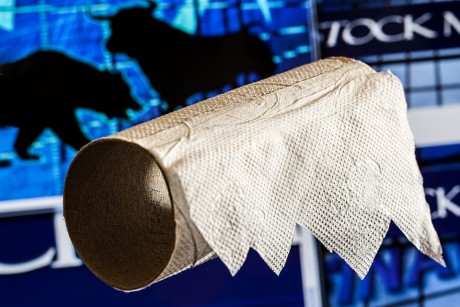 We have never had a year start the way that 2016 has started. In the U.S., the Dow Jones Industrial Average and the S&P 500 have both posted their worst four-day starts to a year ever. Canadian stocks are now down 21 percent since September, and it has been an absolute bloodbath in Europe over the past four days. Of course the primary catalyst for all of this is what has been going on in China. There has been an emergency suspension of trading in China two times within the past four days, and nobody is quite certain what is going to happen next. Eventually this wave of panic selling will settle down, but that won’t mean that this crisis will be over. In fact, what is coming is going to be much worse than what we have already seen.
We have never had a year start the way that 2016 has started. In the U.S., the Dow Jones Industrial Average and the S&P 500 have both posted their worst four-day starts to a year ever. Canadian stocks are now down 21 percent since September, and it has been an absolute bloodbath in Europe over the past four days. Of course the primary catalyst for all of this is what has been going on in China. There has been an emergency suspension of trading in China two times within the past four days, and nobody is quite certain what is going to happen next. Eventually this wave of panic selling will settle down, but that won’t mean that this crisis will be over. In fact, what is coming is going to be much worse than what we have already seen.


